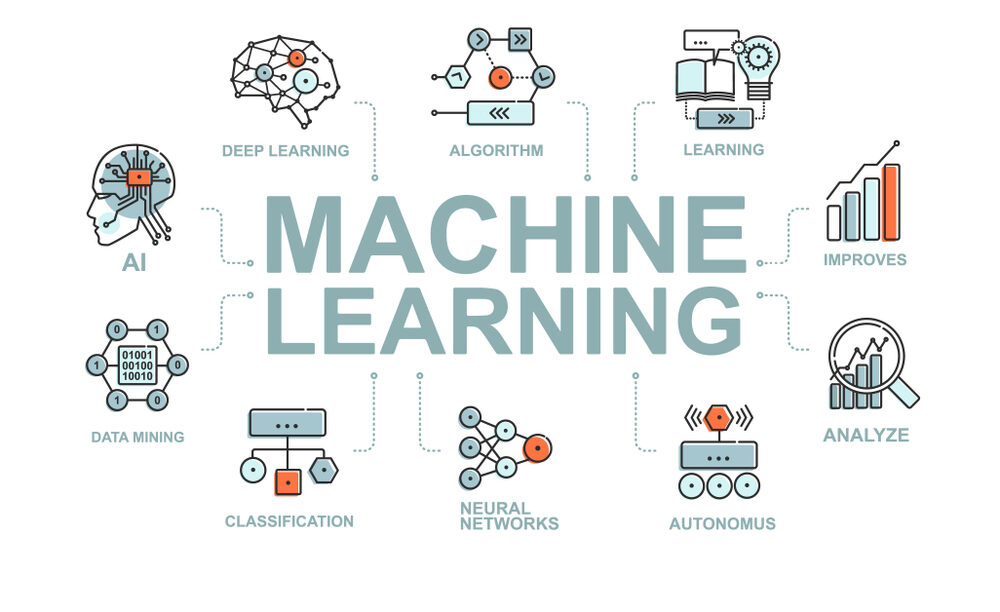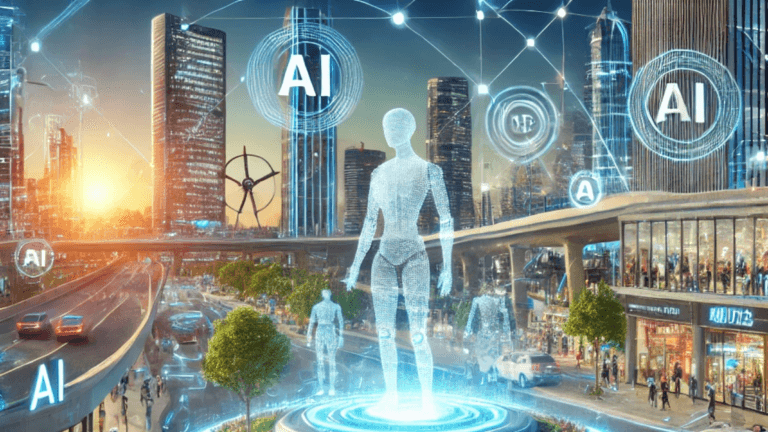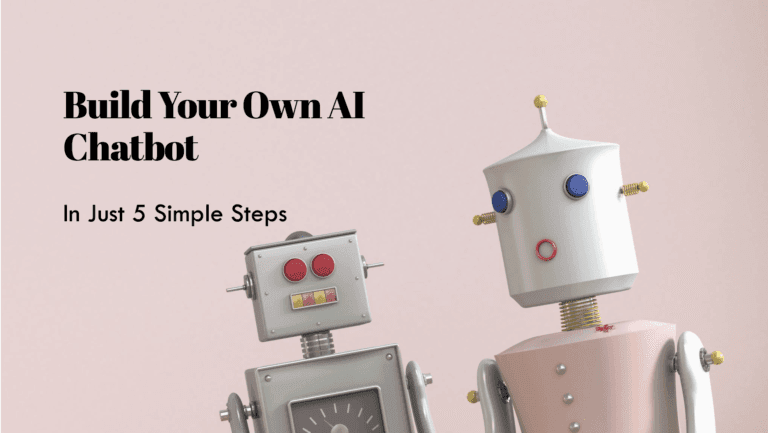Machine learning is transforming industries worldwide, from healthcare to finance, with its ability to process vast amounts of data and provide insightful predictions. For anyone entering the field of data science, mastering machine learning is crucial. But where do you start if you’re a beginner?
This guide breaks down how to learn machine learning for data science into seven simple steps, ensuring you build a strong foundation and can confidently dive deeper into more advanced topics.
What Is Machine Learning for Data Science?
Machine learning (ML) is a subfield of artificial intelligence (AI) that focuses on developing algorithms that allow computers to learn from and make decisions based on data. Essentially, it enables machines to improve their performance on tasks over time without being explicitly programmed for each specific task.
For data scientists, machine learning is an indispensable tool. It allows them to automate the process of analyzing data and predicting outcomes, improving decision-making processes in various sectors.
How Machine Learning Works
- Data Input: The process begins with feeding data into the machine learning model.
- Training: The model is trained using this data to recognize patterns and make predictions.
- Evaluation: The model’s predictions are evaluated for accuracy.
- Optimization: The model is fine-tuned to improve its performance based on the evaluation results.
Common Uses of Machine Learning; Uses of Machine Learning for Data Science
- Healthcare: Analyzing medical images to detect diseases, predicting patient outcomes, and personalizing treatment plans.
- Finance: Fraud detection, algorithmic trading, and credit scoring.
- Marketing: Personalized recommendations, customer segmentation, and targeted advertising.
- Customer Service: Chatbots and virtual assistants that handle customer queries and provide support.
- Transportation: Autonomous vehicles and optimizing logistics and supply chains.
- Entertainment: Recommending movies, music, and other content based on user preferences.
- Cybersecurity: Detecting and preventing cyber threats and unauthorized access.
Why Is Machine Learning Important for Data Science?
In data science, the goal is to extract insights from data, and machine learning plays a pivotal role in achieving that. By applying machine learning techniques, data scientists can:
- Analyze massive datasets quickly and efficiently.
- Detect trends and patterns that would be impossible to spot manually.
- Build predictive models that can forecast future outcomes with high accuracy.
Mastering machine learning opens doors to numerous job opportunities and gives you the skills necessary to excel in the field of data science.
How to Learn Machine Learning for Data Science: A Step-by-Step Guide

Step 1: Build a Strong Foundation in Mathematics
Mathematics forms the backbone of machine learning. Before diving into algorithms and models, you need a solid understanding of key mathematical concepts, including:
- Linear algebra: essential for understanding how machine learning models process data in multidimensional space.
- Probability and statistics: vital for comprehending how algorithms make predictions and assess uncertainty.
- Calculus: helpful when optimizing machine learning models.
If you’re starting from scratch, numerous online courses and resources can help you get up to speed on these topics. Platforms like Khan Academy and Coursera offer excellent courses tailored to beginners.
Step 2: Learn a Programming Language for Machine Learning
Python is the most widely used programming language for machine learning and data science, thanks to its simplicity and the vast array of libraries available. Familiarize yourself with Python basics, such as:
- Variables and data structures (e.g., lists, dictionaries, arrays).
- Control flow statements (e.g., loops, if-else statements).
- Functions and object-oriented programming.
Once you’re comfortable with Python, start learning popular libraries used in machine learning, such as:
- NumPy and Pandas for data manipulation.
- Matplotlib and Seaborn for data visualization.
- Scikit-learn for machine learning algorithms.
Step 3: Understand Key Machine Learning Concepts
After building a solid mathematical and programming foundation, it’s time to learn the fundamental concepts of machine learning. Some of the key topics you should focus on include:
- Supervised learning: training models on labeled data (e.g., regression and classification).
- Unsupervised learning: finding hidden patterns in data without explicit labels (e.g., clustering).
- Model evaluation: learning how to evaluate and improve your machine learning models using techniques like cross-validation and confusion matrices.
Start with beginner-friendly resources such as online tutorials, blogs, and machine learning courses on platforms like edX or Coursera.
Step 4: Work on Real-World Projects
One of the best ways to learn machine learning for data science is to apply your knowledge to real-world problems. Begin by working on simple datasets available from platforms like Kaggle, where you can:
- Tackle beginner-friendly machine learning challenges.
- Learn by doing and improve your skills by experimenting with different algorithms.
- Study others’ solutions to learn advanced techniques and best practices.
Hands-on experience with projects not only helps you apply theoretical knowledge but also builds your portfolio, which is crucial when looking for job opportunities in data science.
Step 5: Master Data Preprocessing Techniques
In machine learning, data preprocessing is a critical step that can significantly impact your model’s performance. Before feeding raw data into your machine learning algorithm, you need to clean and prepare it by:
- Handling missing values (e.g., through imputation).
- Scaling features to normalize the data.
- Encoding categorical variables for models that require numeric input.
Understanding how to prepare data effectively will ensure your models perform optimally and lead to more accurate predictions.
Step 6: Learn Advanced Machine Learning Algorithms
Once you have a good grasp of the basics, it’s time to dive into more advanced machine learning algorithms that can handle complex datasets. Some key algorithms to explore include:
- Decision trees and random forests: widely used for classification tasks.
- Support vector machines (SVM): useful for high-dimensional data.
- Neural networks: the foundation of deep learning, capable of handling large and complex datasets like images and videos.
Learning these advanced algorithms will broaden your skill set and help you tackle more challenging machine learning problems in data science.
Step 7: Explore Deep Learning
Deep learning is a subset of machine learning that focuses on neural networks, which are designed to mimic the human brain’s structure and function. Deep learning excels at processing large datasets, such as image, video, and natural language data. It’s an essential skill for any data scientist looking to push the boundaries of what’s possible with machine learning.
Popular libraries for deep learning include TensorFlow and Keras, which offer high-level APIs to build neural networks. Start by building simple neural networks for tasks like image classification or sentiment analysis.
Key Resources to Learn Machine Learning for Data Science

There are countless resources available to help you learn machine learning for data science. Here are some highly recommended platforms and tools:
- Coursera: Offers comprehensive machine learning courses from top universities, including Andrew Ng’s popular course on machine learning.
- edX: Provides free and paid courses on machine learning and data science.
- Kaggle: A great platform for practicing machine learning with real-world datasets.
- Books: “Hands-On Machine Learning with Scikit-Learn, Keras, and TensorFlow” is an excellent book for beginners.
FAQs
What is the difference between machine learning and data science?
Data science is a broader field that encompasses various methods for analyzing data, while machine learning is a specific subset that focuses on using algorithms to make predictions or decisions based on data.
How long does it take to learn machine learning for data science?
The learning curve for machine learning varies depending on your background and commitment. Generally, it can take several months to a year to become proficient, especially if you’re starting from scratch.
Do I need a degree to learn machine learning?
No, many professionals in the field have learned machine learning through online courses and self-study. However, a degree in computer science, statistics, or a related field can be beneficial.
Which programming language is best for machine learning?
Python is the most popular programming language for machine learning due to its simplicity and the availability of numerous libraries.
Is machine learning hard to learn?
While machine learning has a steep learning curve, it becomes more manageable with consistent practice and study. Starting with fundamental concepts and gradually moving to advanced topics can ease the process.
What are the career prospects for machine learning in data science?
The demand for machine learning engineers and data scientists is growing rapidly across industries, making it a highly lucrative and sought-after career.
Conclusion
Machine learning is revolutionizing industries worldwide, making it crucial for aspiring data scientists to master this field. This comprehensive guide breaks down learning machine learning into seven simple steps, emphasizing the importance of building a strong foundation to confidently explore more advanced topics. By understanding key machine learning concepts, working on real-world projects, learning advanced algorithms, and exploring deep learning, individuals can acquire the necessary skills to excel in data science. Moreover, by leveraging resources such as Coursera, edX, Kaggle, and essential books, beginners can accelerate their learning curve. Ultimately, mastering machine learning offers a plethora of job opportunities and the ability to extract insights from data effectively, setting the stage for a successful career in data science.
Summary:
Machine learning is an essential component of data science, enabling professionals to analyze vast amounts of data and make predictions. This guide outlines seven crucial steps for beginners to learn machine learning for data science: building a strong foundation in mathematics, mastering Python, understanding key machine learning concepts, applying knowledge to real-world projects, learning data preprocessing techniques, exploring advanced algorithms, and diving into deep learning. With consistent practice and the right resources, you’ll be well-equipped to excel in the field.











